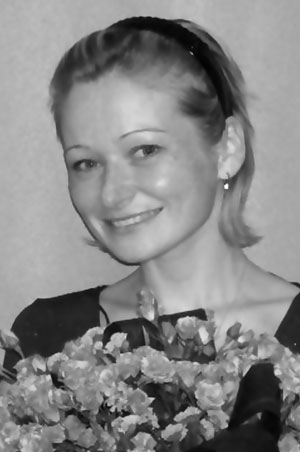Standardization of results of estimation of cardiorespiratory abilities of sports ballroom dancers
Фотографии:
ˑ:
V.A. Aleksandrova, associate professor, Ph.D.
V.V. Shiyan, professor, Dr.Hab.
Russian state university of physical culture, sport, youth and tourism, Moscow
Key words: sports ballroom dances, cardiorespiratory system, aerobic abilities.
Relevance. Proceeding from the analysis of elite dancers’ competitive activity, high requirements are imposed to the work of the cardiorespiratory system of these athletes, stipulating for the necessity of assessment of the indicators of dancers’ cardiorespiratory system at different training phases.
Athletes’ physical working capacity and its state are determined by the cardiorespiratory system, for the dance sport competitive program is mostly aerobic and depends on the operation of the system of oxygen transport system (J.H. Wilmore). Maximal oxygen consumption (MOC) is the most informative cardiorespiratory indicator for athletes. There exist the rating scales of maximal oxygen consumption for those not going in for sport, for athletes of different specializations, age and gender.
Specifically, in term of the data obtained (K. Cooper, 1970; E.A. Pirogova, L.Ya. Ivaschenko, 1986; G.L. Apanasenko, 2000), the threshold value of maximal oxygen consumption is 42 ml/min/kg for men and 35 ml/min/kg for women, which is marked as the safe level of somatic health. 5 levels of human physical health are distinguished depending on the value of the indicator of maximal oxygen consumption. The value levels of maximal oxygen consumption for the age group of 20-29-year-olds are as follows: low - 32 ml/min/kg, below average 32-37 ml/min/kg, average - 38-44 ml/min/kg, above average - 45-52 ml/min/kg, high >52 ml/min/kg.
The treadmill endurance test is most frequently used to estimate physical working capacity of athletes in different sports. It promotes measuring a wide range of respiratory indicators. There exist standard indicators of obtained results for every sport, but the lack of the rating scale of the indicators in this test in dance sport makes it difficult to estimate the level of development of dancers’ aerobic abilities, since the values of the obtained results compared with the mean values in other sports are unreliable.
Organization and methods. 55 elite dancers were involved in the one-year study held in RSUPCSYT. The methods applied included ergometry, gas analysis and mathematical statistics.
The test was taken in accordance with the program stipulated below. Step test. Aerobic endurance was tested on a treadmill H/p cosmos Saturn 4.0 as provided by the following regulations:
The loadings with the start speed 7 km/h increase every 2 minutes by 2 km/h with treadmill elevation angle being constant at 4°.
Gas analyzer - Metalayzer 3B - R2 - the device intended for continuous record of gas exchange and heart rate indicators during the test.
Results of the study. The one-year study was carried out in vitro with 55 elite dancers involved in the treadmill endurance test. The study resulted in the mean values of the cardiorespiratory indicators: MOC - 49±8 ml/min/kg; MOC women - 43±9 ml/min/kg; VE men - 130±49 L/min, VE women - 85±24 L/min.
The approach to the methods of standardization of results by mean values stipulated for the design of the evaluation scale of the external respiration indicators: volume of air expired and maximal oxygen consumption, adduced in Table 1.
The rating scale of cardiorespiratory indicators of elite dancers in the treadmill endurance test
|
|
men |
||||||
|
Indices |
Very low |
Low |
Below average |
Average |
Above average |
High |
Very high |
|
MOC ml/min/kg |
<33 |
≥33 < 42 |
≥ 42 < 47 |
≥ 47 < 56 |
≥ 56 < 61 |
≥ 61 < 70 |
>70 |
|
VE L/min |
<81 |
≥81< 102 |
≥102 <113 |
≥113<135 |
≥135 <146 |
≥146<167 |
>167 |
|
|
women |
||||||
|
MOC ml/min/kg |
<25 |
≥25 < 33 |
≥33< 37 |
≥37< 45 |
≥45< 49 |
≥49< 56 |
>56 |
|
VE L/min |
<61 |
≥61<72 |
≥72 < 78 |
≥78 < 89 |
≥89 < 98 |
≥98 <106 |
>106 |
Proceeding from the results of the studies, the training process is to be arranged in such a way so that it influenced directly the development of dancers’ aerobic abilities, focusing on the high and very high value indicators of maximal oxygen consumption and volume of air expired (Table 1).
Conclusions. The designed rating scale of results of evaluation of cardiorespiratory indicators: maximal oxygen consumption and volume of air expired, will promote estimation of the athlete’s state at different training phases.
The obtained results will promote the design of the substantiated approaches to correction of the training process intended for development of dancers’ aerobic abilities in view of the quantitative values.
References
- Volkov, N.I. Pulse criteria of energy cost of an exercise / N.I. Volkov, O.I. Popov, A.G. Samborsky // Fiziologiya cheloveka. - 2003. - V. 29. - № 3. - P. 98–103. (In Russian)
- Volkov, N.I. The rules of biochemical adaptation within sports training: study guide / N.I. Volkov. - Moscow: SCOLIPC, 1986. - 63 P. (In Russian)
- Zatsiorsky, V.M. Sports metrology: Textbook for institutes of physical culture / V.M. Zatsiorsky. - Moscow: Fizkultura i sport, 1982. - 256 P. (In Russian)
- Human physiology: textbook for universities of physical culture and faculties of physical education of teacher’s colleges; gen. ed. by V.I. Tkhorevsky. - Moscow: Fizkultura, obrazovanie, nauka, 2001. – 492 P. (In Russian)
Author’s contacts: nikiri@mail.ru



 Журнал "THEORY AND PRACTICE
Журнал "THEORY AND PRACTICE